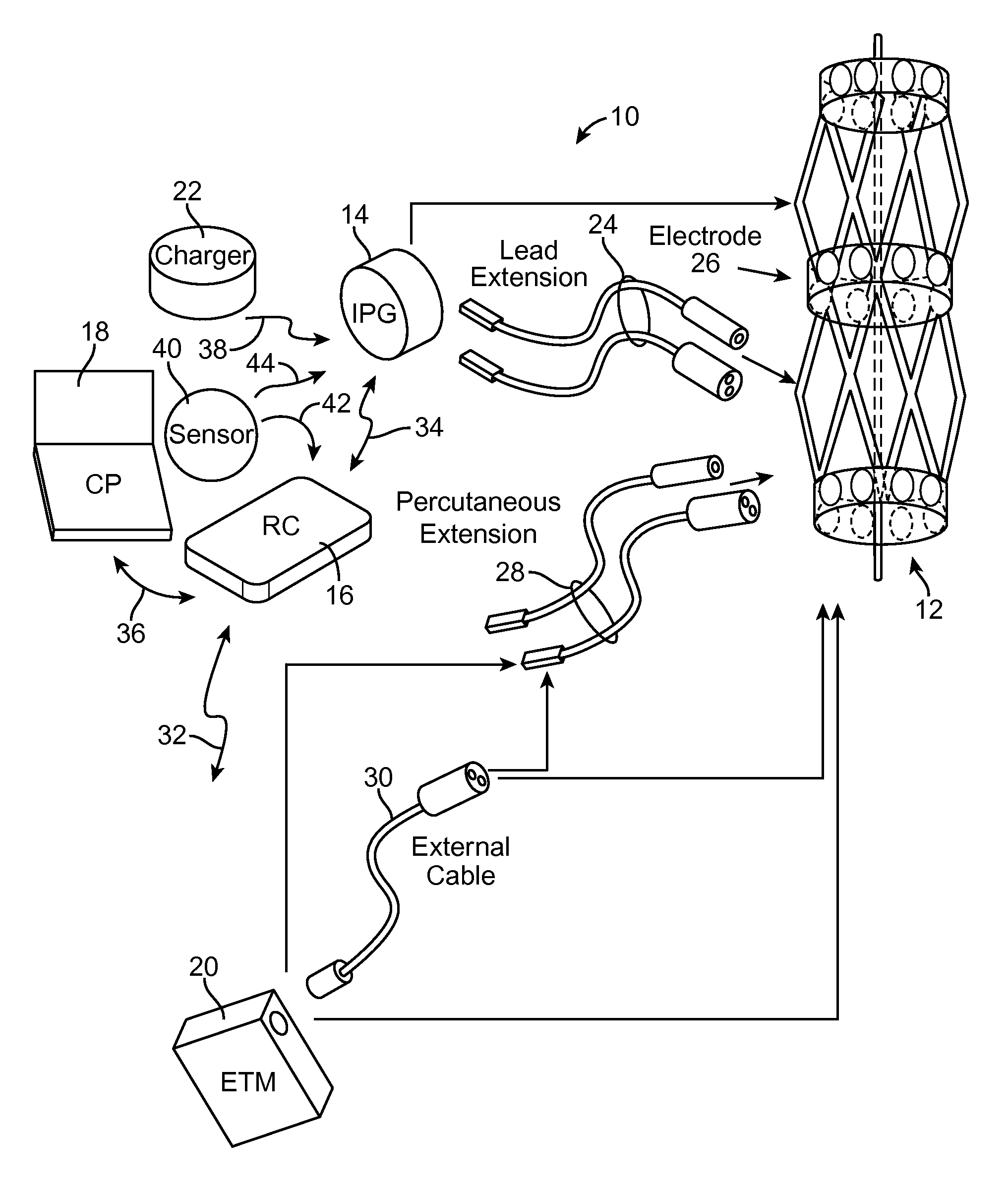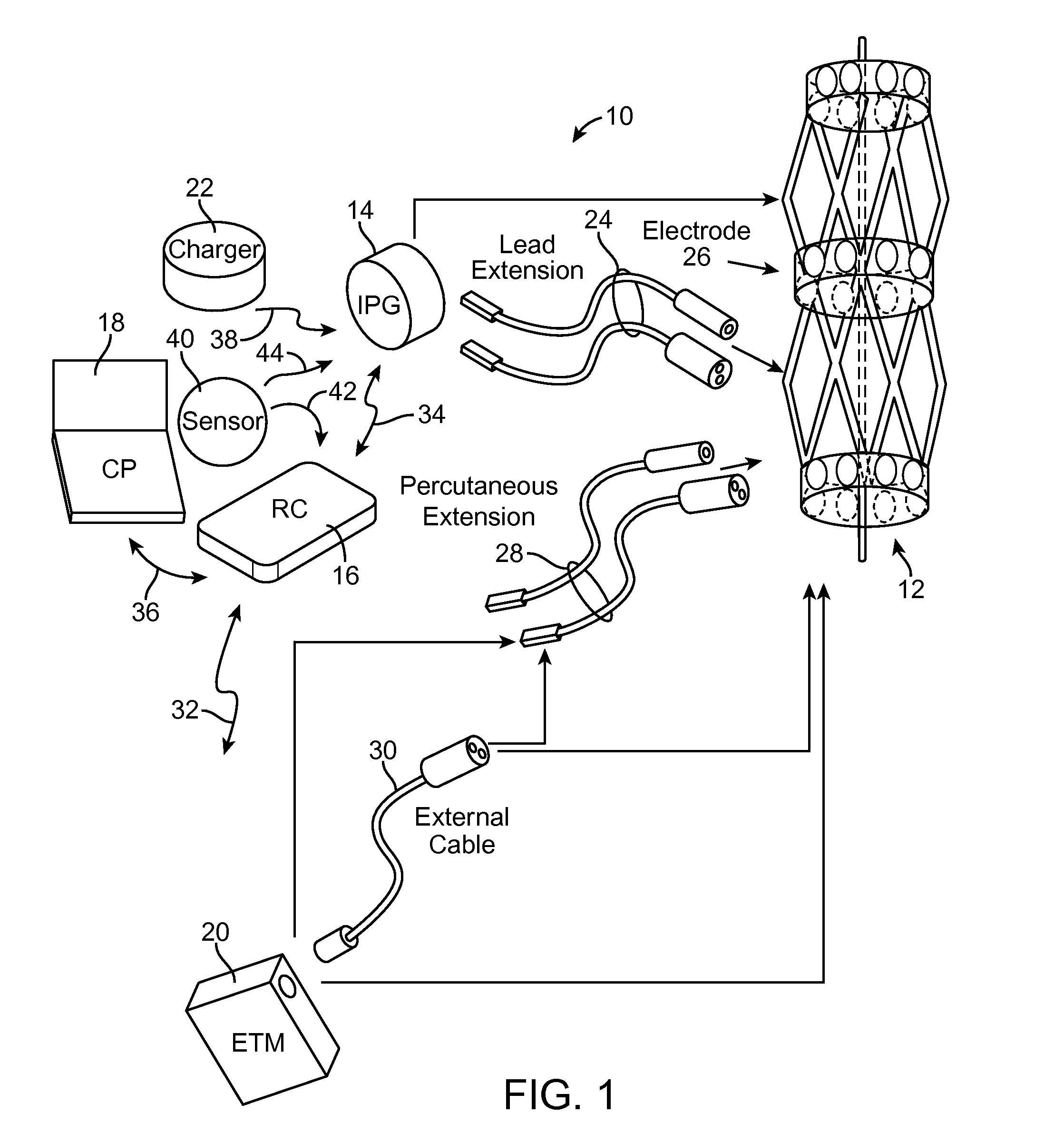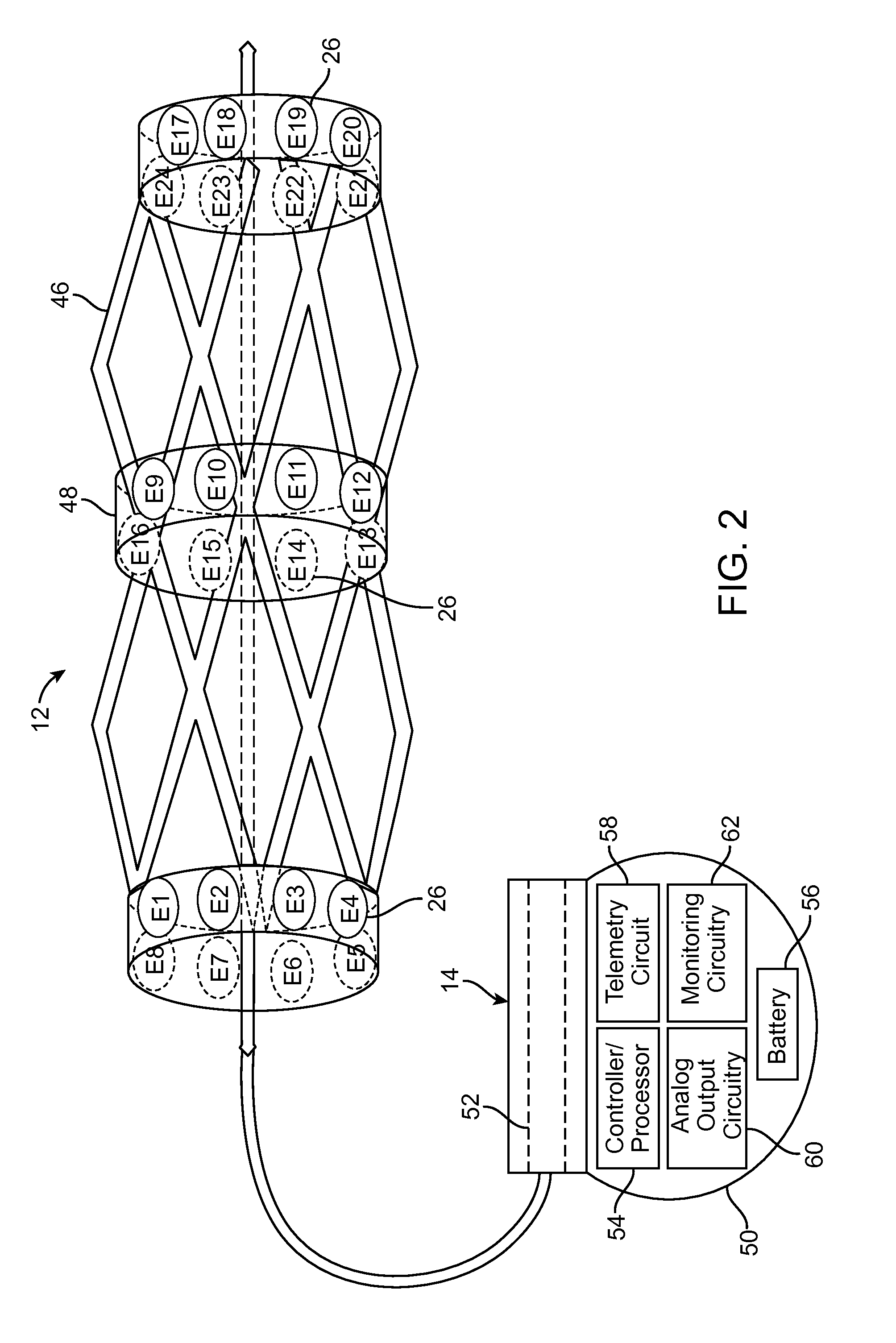[0007]In accordance with one aspect of the present inventions, a neuromodulation system for use with a patient is provided. The neuromodulation system comprises a cylindrical support structure (e.g., a stent or a balloon) configured for being deployed in a blood vessel of the patient, and at least one electrode carried by the cylindrical support structure. In one embodiment, the cylindrical support structure is a resilient skeletal spring structure for urging the electrode(s) against an inner wall of the blood vessel. In another embodiment, the support structure comprises an electrically insulative material for preventing electrical energy from being radially conveyed inward from the cylindrical support structure.
[0014]The therapy system further comprises analog output circuitry, monitoring circuitry, and a controller / processor configured for performing at least one of a first process and a second process, which may be performed automatically. The first process comprises prompting the analog output circuitry to sequentially activate the plurality of electrodes to evoke at least one CAP in a nerve associated with the blood vessel, prompting the monitoring circuitry to activate the axially remote electrode in response to the activation of each of the plurality of electrodes to sense the at least one evoked eCAP, and identifying one of the plurality of electrodes based on the sensed eCAP(s). The second function comprises prompting the stimulation output circuitry to active the axially remote electrode to evoke at least one CAP in the nerve associated with the blood vessel, prompting the monitoring circuitry to sequentially activate the plurality of electrodes in response to the activation of the axially remote electrode to sense the eCAP(s), and identifying the one electrode based on the sensed eCAP(s). After either of the first process or the second process is performed, the controller / processor is configured for prompting the analog output circuitry to deliver therapeutic energy to the therapeutic electrode adjacent the identified electrode. In one embodiment, multiple CAPs are evoked to increase the signal-to-noise ratio of the sensed eCAPs.
[0015]In accordance with a fourth aspect of the present inventions, a method of treating a medical condition (e.g., hypertension) of a patient is provided. The method comprises delivering electrical stimulation energy to a stimulation site on the wall of a blood vessel (e.g., a renal artery), thereby evoking at least one CAP in a nerve branch associated with the blood vessel, and sensing the eCAP(s) at a sensing site on the wall of the blood vessel. One method may further comprise disposing a stimulating electrode in the blood vessel at the stimulation site, in which case, the electrical stimulation energy is delivered by the stimulating electrode, and disposing a sensing electrode in the blood vessel at the sensing site, in which case, the eCAP(s) is sensed by the sensing electrode. In one method, multiple CAPs are evoked to increase the signal-to-noise ratio of the sensed eCAPs.
[0016]The method further comprises identifying a circumferential location of the nerve branch as being adjacent one of the stimulation site and the sensing site based on the sensed eCAP(s), and delivering therapeutic energy to a therapeutic site on the wall of the blood vessel adjacent the circumferential location of the nerve branch, thereby modulating the nerve branch and treating the medical condition.
[0018]Another method may further comprise disposing a plurality of sensing electrodes in the blood vessel respectively at a plurality of circumferential sites in axial alignment with the sensing site, disposing a stimulation electrode in the blood vessel at the stimulation site, activating the stimulation electrode to evoke the CAP(s), and sequentially activating the sensing electrodes in response to the activation of the stimulation electrode, such that the eCAP(s) is sensed by the activation of one of the sensing electrodes. The method further comprises identifying the circumferential site at which the one sensing electrode is located as the sensing site. This method may further comprise disposing a plurality of therapeutic electrodes in the blood vessel respectively adjacent the sensing electrodes, and selecting the therapeutic electrode adjacent the one sensing electrode to convey the therapeutic energy to the therapeutic site. A cylindrical support structure carrying the sensing electrodes and therapeutic electrodes may be disposed in the blood vessel in axial alignment with the sensing site. In this case where hypertension is treated, and the blood vessel is a renal artery, the modulation of the nerve branch may decrease the blood pressure of the patient, thereby treating the hypertension.
 Login to View More
Login to View More  Login to View More
Login to View More 


